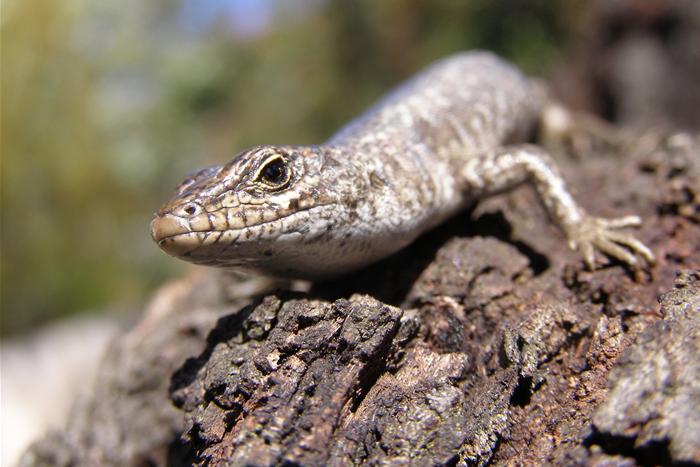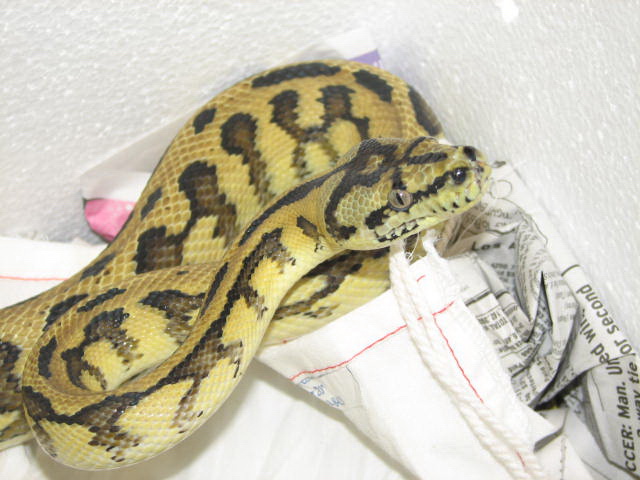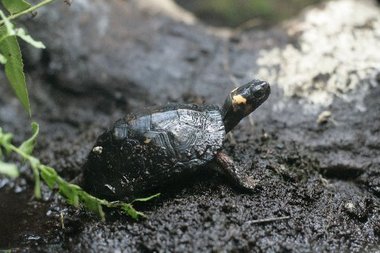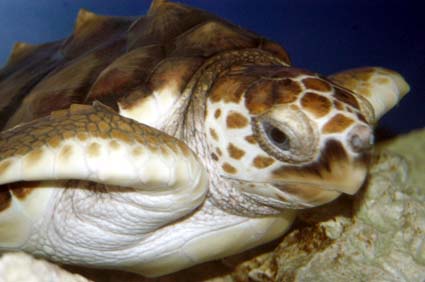Reptile & Amphibian
News Blog
Keep up with news and features of interest to the reptile and amphibian community on the kingsnake.com blog. We cover breaking stories from the mainstream and scientific media, user-submitted photos and videos, and feature articles and photos by Jeff Barringer, Richard Bartlett, and other herpetologists and herpetoculturists.
Friday, November 5 2010
 The Snow Skink is the first reptile to determine sex of the offspring in two locations with completely different methods. We as humans know there are a variety of way to determine sex of an incubating clutch, but with these guys, they do it on their own.
From ABC Science:
At low altitudes, the lizard's gender is determined by temperature, while at high altitudes where the climate is more extreme, it's all down to their genes, according to a study in Nature.
....
The snow skink is a small six centimetre long lizard which lives in coastal and sub-alpine areas beneath rock slabs, eating insects and wild berries. It gives birth to live young rather than laying eggs, producing between one and six babies.
Previous research shows that the sex of baby skinks is determined during the first half of the pregnancy, depending on how long the mother remains in warm sunshine. Warm temperatures generally produce females, while cooler temperatures produce males.
....
The researchers found that lowland mothers had very different ratios of boys to girls, depending on how much sunshine they had. By contrast, the highland mothers showed no difference in sex ratio of offspring, regardless of how long they spent in the Sun
To read the full article, click here.
Thursday, November 4 2010
 A 130-year-old festival aims to educate locals about the snakes that live in their backyards.
In India, there is a reason to have hesitation of some snakes; even reptile folks would need to double check closely before reaching out and just grabbing the snake on the ground. Kraits and Cobras are not things of child's play.
From the Times of India:
"Legend goes that gunins and ojhas used to worship the snake goddess on this day. Snakebites were very common in these parts. The ojhas and gunins were the ones who used to treat the victims. During the fair, the goddess was worshipped and snakes were made to perform. That tradition has stayed on," said Subodh Patra, a descendant of Jhatunath Patra.
A postal department employee, Subodh is now one of leading figures in the fair and a rescuer of snakes. "We rescue the snakes, look after them throughout the year and then release them. Snakes are a very important part of our environment. Through the fair, we try to educate and inform the people about the different kinds of snakes. Not all snakes are poisonous but people have misconceptions," he explained.
During the year, Subodh and other villagers are on the lookout for poisonous snakes and cases of snakebites in the adjoining villages. The snakes are caught and their fangs taken out (in most of the snakes), they are kept for the rest of year and then released in forests or rivers.
The festival pays tribute to Manasa, the snake goddess. To read more, click here.
Wednesday, November 3 2010
 Any herper knows, you say you have snakes, someone will exhibit fear. An article by the Houston Chronicle tries to take some of that fear away, just in time for NARBC to hit town.
Like spiders, most snakes are not harmful to humans, especially the ones common in urban and suburban Texas, says Corey Roelke, a biologist and past president of the Texas Herpetological Society.
Rattlesnakes, coral snakes, copperheads and cottonmouths are dangerous, but if you leave most venomous snakes alone, you're likely not going to be bitten.
"The vast majority of people who are bitten by snakes are trying to catch or kill them," Roelke says. "People think snakes are charging after them. In general, they want to get away from you."
Snakes are also useful. They're experts at catching rodents, slithering into small spaces cats can't reach.
King snakes and indigo snakes eat their venomous brethren, such as rattlesnakes.
Some snakes make great pets, Roelke says, because they don't need frequent feeding or complicated habitats.
The article was inspired by things that make people go jump in the night and also touches on bats and spiders. Any time a snake gets good press, it is a good day.
 Six hundred dead sea turtles in the Gulf might seem like a fairly small number given the enormity of this year's catastrophic oil spill, but the fact that each species is struggling for survival makes the impact greater than its numbers alone.
From the Economic Times:
Among the saddest images from BP Plc's three-month-long oil gusher in the Gulf of Mexico were those of oil-slicked birds struggling to survive. US officials said preliminary information showed the disaster may have killed up to 6,104 birds and 609 turtles.
But on the positive side, the figures showed that more than 14,000 turtle hatchlings emerged from nests that were relocated to beaches away from the oil spill.
....
The report was based on input from wildlife collection centres, government departments and other sources, but officials warned that the figures reflected "only the initial, field-level, evaluation".
More investigation was needed and not all of the injured and dead wildlife were "necessarily" caused by the BP spill, officials said.
Nest relocation may have helped prevent a true tragedy. There were 278 nests relocated, and as of today 14,676 hatchlings have emerged.
Tuesday, November 2 2010
 Upset that the turtle traps placed by New Jersey Fish and Wildlife were trapping and drowning not nuisance Snapping Turtles but other species, primarily Painted Turtles, Audra Capps tried to help. That's where she got in trouble.
From NJ.com:
While the traps were apparently put in place to capture snapping turtles, Audra Capps contends they were poorly assembled and instead were trapping and drowning another species of the aquatic reptiles — painted turtles, the report said.
A conservation officer with the New Jersey's Division of Fish and Wildlife caught Capps and a friend pulling out the traps, the report said. Both were issued four summonses each but Capps hopes to convince the judge she was just acting as a Good Samaritan looking out for helpless wildlife.
Capp has quite a bit of public support behind her. To read the full article, click here.
Monday, November 1 2010
 With many sea turtle eggs hatched and released into the Atlantic Ocean as a way to avoid the Gulf Oil Spill, things may be hard for the Loggerheads. From Eureka:
During embryonic development turtle eggs spend long periods covered by sand under conditions of high humidity and warm temperatures, which are known to favor the growth of soil-born fungi.
Dr Diéguez-Uribeondo's team focused their study on the loggerhead sea turtle (Caretta caretta) population on Boavista Island, Cape Verde, off the West African coast. While Boavista Island represents one of the most important nesting regions for this species a high hatching failure rate is driving population numbers down.
The team sampled egg shells with early and severe symptoms of infection, as well as diseased embryos from sea turtle nests located in Ervatao, Joao Barrosa and Curral Velho beaches and discovered 25 isolates of F. solani associated with egg mass mortalities.
Although this fungal species has been previously described in association with different infections in animals, its relationship to hatching failure had not been investigated before this study.
The finding that strains of F. solani may act as a primary pathogen in loggerhead sea turtles represents an extremely high risk to the conservation of loggerhead sea turtles across the area.
The good news for this year's releases is that they were hatched in secure locations. Furthermore, the identification leads conservations and scientists to a starting path of recovery. To read the full press release, click here.
|



